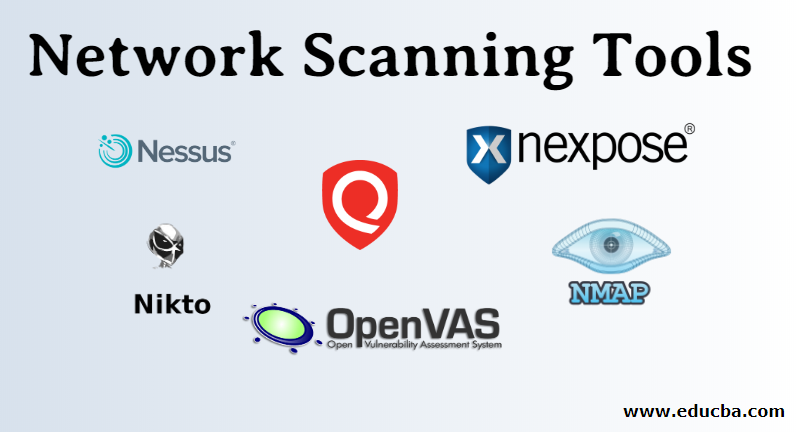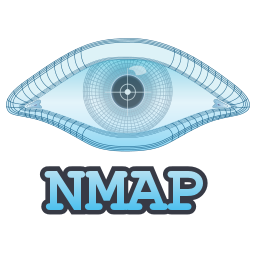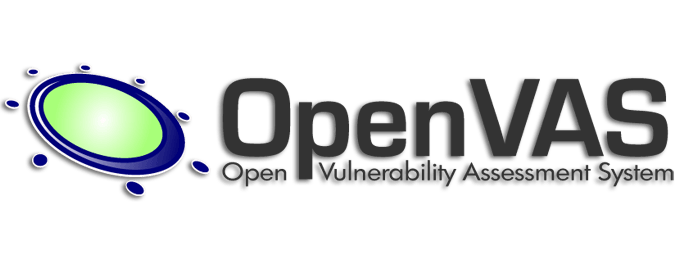Updated August 10, 2023

Introduction to Network Scanning Tools
A digital system that belongs to any organization is usually comprised of several technologies. The system may consist of several things like a web application, servers, routers, network architecture, and other network devices. If we talk about the system’s security, all these devices are supposed to be secure to provide overall security to the system. The web application can be protected by opting for a secure coding method, while the other network devices can be protected by using the configuration. To keep the network secure from the attacks, we need first to identify the networking devices’ vulnerabilities. For the purpose of finding the vulnerabilities, we will need to scan the network or the networking devices. In this course, we will learn about the tools used to perform network scanning. So let’s get started to explore the.
Network Scanning Tools
It may be defined as the tools used to perform a scan on the network to detect the existing vulnerabilities. The network scan is all about checking for the security misconfigurations in the network devices. Another reason that usually leads to vulnerability in the network is using the old versions of any service. The network scanning could be performed using either the command line utilities of the Linux operating system or some of the cloud-based applications.
Below are the popular tools that are used to perform network scanning.

1. Nexpose
Nexpose may be defined as the network scanning tool that is used to perform network scanning. It usually runs the Nmap scripts in the background in order to perform the scan. The output of the scan is based on which model of scan has been done.
There are two modes of scanning in Nexpose: 1. Authenticated Scanning 2. Unauthenticated Scanning.
In the unauthenticated scan, the nexpose engine does not scan the files that need authentication to be scanned, and hence the output generated are not accurate. The authenticated scan checks the critical configuration files as the scan was authenticated using the admin credentials. Nexpose has a one-tier architecture as it has the console, database, and engine at the same site. Nexpose is a product of Rapid7 that is an organization that developed this tool.

2. Nessus
Nessus can be considered the other network scanning tool used to ensure the security of the application by magnifying the vulnerabilities. Tannable has developed this tool, and in the current period, it has been used by more than twenty-five thousand organizations. Like nexpose, it also examines special files and folders that consist of the data related to the device’s security configuration. It checks for the services running on the network devices and their version to determine if the version is weak for the attack. It is also capable of checking the configuration file to ensure the vulnerabilities. Also, if services are running on the device, it also finds out the service version to check if that version is vulnerable.

3. NMap
NMap may be considered another command line-based network scanning utility found inbuilt on some of the Linux distribution. It runs the scan in order to check the status of a port by using either TCP or UDP protocol. It is a strong eno to scan all the 65535 ports. While using this utility, several attributes could be used in order to customize the scan.
Nmap can also detect the operating system of the host or the network device that it scans. There are some default values associated with the attributes, and by using such attributes, we can perform an efficient network scan. It is the base of tools like nexpose, which means all the operations performed by nexpose are actually performed using Nmap in the background. It confirms of any port is filtered, closed or open. Based on the kind of protocol we use while scanning the network, it takes the required time and also tries to establish the connection accordingly.

4. Qualys
Qualys can also be considered as the other best network scanning tool. It scans the network or the concerned network devices in order to ensure if they meet the requirements to adhere to the compliance. It was developed by organizations named Qualys that was found in 1999. It was the first network vulnerability scanner that was introduced to the market in December 2000.
This tool scans the vulnerabilities in the network and suggests the patch associated with it to remediate the vulnerability. In addition to network scanning, it also has the functionality to scan the vulnerabilities in web applications.
The best part about using Qualys is that it gives an accurate scanning report and makes the user aware of what kind of action has to be taken to fix the vulnerability. It is actually a cloud-based vulnerability scanner that performs the scans and saves the report in cloud-only. It can also perform the policy scan, which checks things like if the hardening of the server has been done. In a nutshell, Qualys is a whole package for scanning the network, web application, and policies, making it popular.

5. Nikto
Nikto may be defined as the other command-line based network scanning utility that is usually present in the Linux distribution like Kali Linux.
It is preferred when the requirement is to perform server type specific checks. Though Nikto is considered the tool that generates lots of false alarms but still being open-source, it is often used for network scanning. Like the other tools, it also checks the vulnerabilities existing in the network and alerts us about them so that those could be fixed before the attacker takes advantage of it. It is available by default in some of the Linux distributions while installed in others. The way it scans the network is pretty much the same as the other tools do, but it lacks the availability to run the scan in a customized manner. Also, being a command-line tool, the user’s whim is familiar with the command line interface finds it easy to work with it and remains of the users prefer to work with the graphical user interface based tools.

6. Zenmap
Zenmap is the graphical user interface version of the Nmap network security scanner. It may also be defined as the GUI based network scanning tool that runs the Nmap commands in the background in order to perform the scan. In this tool’s environment, there is an input box that specifically serves the purpose of taking the Nmap commands.
An output area below that input box shows all the outcome of running that Nmap command. This is also an open-source network scanning tool, and that is the reason it is popular among users who liked to work with a graphical user interface. The important thing about this tool is that it can perform each action that Nmap can perform, which makes it very helpful and easy to work with.

7. OpenVAS
OpenVAS is the other network scanner that is mainly used for performing the vulnerability scan and managing vulnerabilities. In the beginning, it was an open-source tool that later turned into a proprietary license by Tenable. The way of working if this scanner can be found the same as that of others. It may also be considered the network scanning tools that make it very efficient and effective to run as scan as the output revised as the result of scanning is pretty accurate. The way to remediate the vulnerabilities is also mentioned in the report sheet, making it very easy for the users to mitigate the risk caused due to that vulnerability. In comparison to the other tools, several organisations also use it as it supports the feature of scheduled scanning. This tool makes it very easy to keep track of all the network’s vulnerabilities so that it should be kept protected against harmful attacks.
Conclusion
These are the applications or utilities that have been developed to identify the vulnerabilities in the network. The sole purpose of the existence of such tools is to contribute to maintaining the security of any organization. Several tools out in the market serve network scanning, and every tool holds its own importance. Some have a good interface, while others are good at performing the scan in a short span of time. One can opt for any of the various options by analyzing what they expect the network scanner to do for them. These tools actually help in maintaining the security of the organization, and together with time, they are being amended continuously to step together with the improved forms of attacks.
Recommended Articles
This is a guide to Network Scanning Tools. Here we discuss the Introduction to Network Scanning Tools and the top 7 scanning tools with a detail explanation. You can also go through our other suggested articles to learn more –


